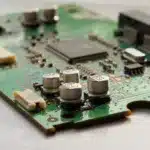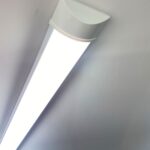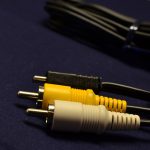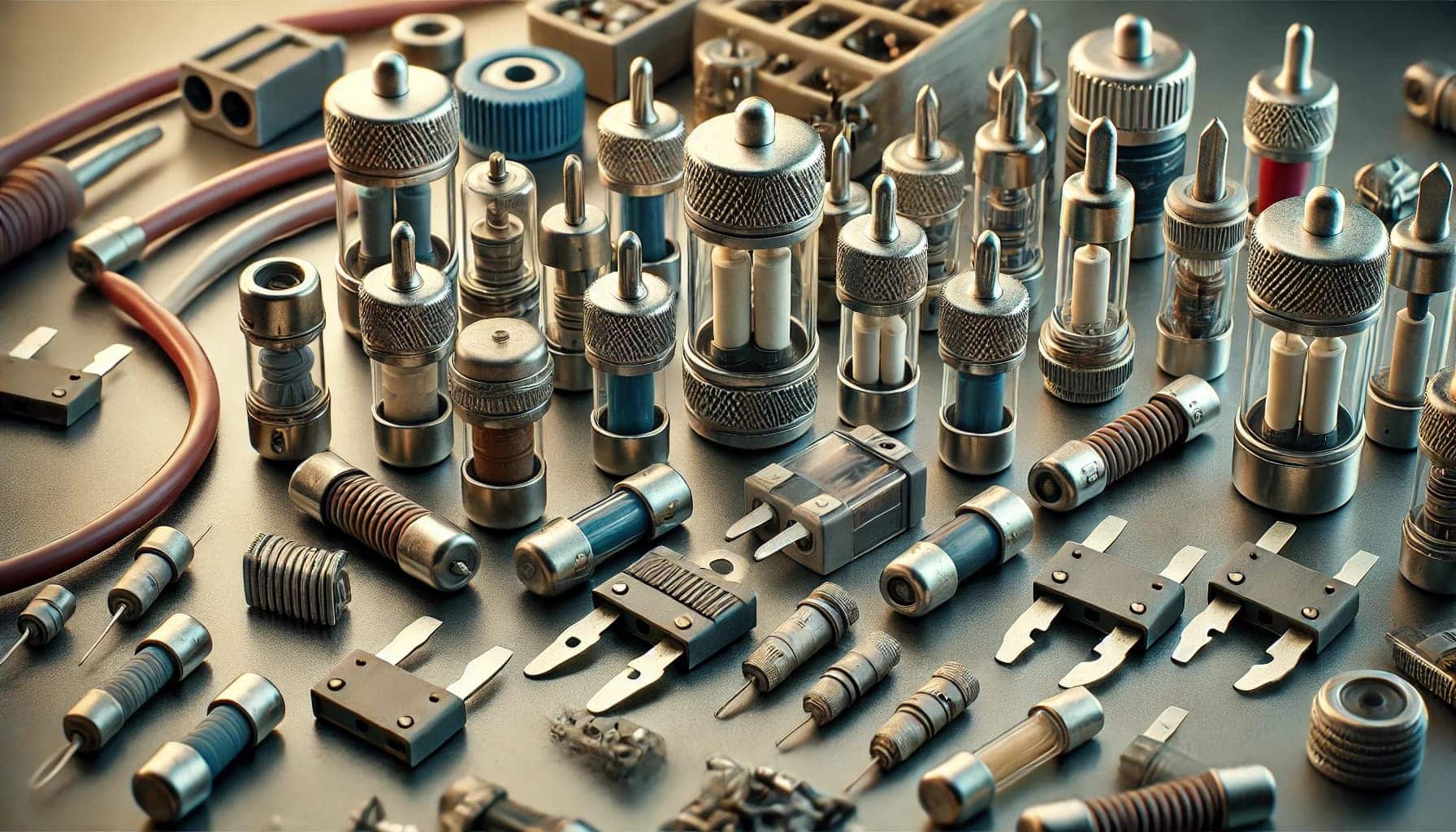
Introduction
In electronics and electrical systems, ensuring the safety and efficiency of circuits is paramount. Among various electrical safety devices, bottle fuses are critical components that protect against overcurrent and short circuits. This guide covers everything you need to know about bottle fuses—from their working principle and importance to their common types, common issues, and applications across various sectors.
What are Bottle Fuses? Definition and Purpose
Bottle fuses, also called D fuses or screw-in fuses, are electrical protection devices designed to safeguard electrical circuits from damage caused by overcurrents. These fuses resemble a small bottle and are characterised by their distinctive cylindrical shape. A bottle fuse typically consists of a ceramic or glass body with a metal screw cap on one end and a contact tip on the other. The fusible link inside the body is designed to melt when subjected to a current above the rated capacity, effectively cutting off power and protecting the connected devices. In addition, bottle fuses come in varied voltage and current ratings, sizes, and mounting configurations, protecting household appliances and industrial equipment.
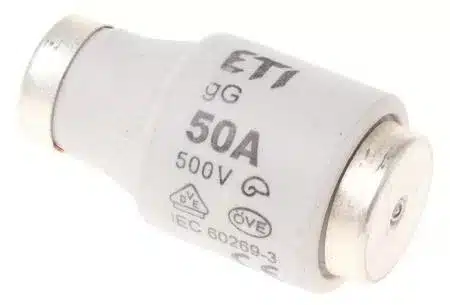
The Importance of Bottle Fuses in Electrical Circuits
Bottle fuses ensure the safety and reliability of electrical circuits by breaking the circuit and protecting connected devices from severe damage. One of the key reasons bottle fuses are so important is their ability to protect both the appliances and the wiring within electrical systems. Unlike circuit breakers, which might sometimes fail to trip due to mechanical faults, bottle fuses are reliable components and less prone to mechanical failures. In essence, D-type fuses provide an essential layer of protection that can prevent costly repairs, downtime, or even life-threatening accidents, making them a staple component across various settings.
A Simple Operating Principle of Bottle Fuses: How Do They Work?
A bottle fuse consists of a conductive metal strip that rapidly responds to exceeding electrical currents. Upon exceeding the fuse’s rated capacity, the metal strip heats up (melts) and breaks, interrupting the electrical flow. This process stops the current, thereby protecting the equipment or circuit. Moreover, the simplicity and reliability of this mechanism make these fuses a popular choice for many applications.
Popular Types of Bottle Fuses: Exploring Their Varieties
Bottle fuses are available in various types based on their current ratings, voltage ratings, and sizes. Each fuse type is designed for specific applications. Additionally, Some of the standard types include:
Slow-Blow Fuses
Slow-blow fuses are designed to tolerate short-duration overcurrents without melting. They are ideal for circuits that experience occasional current surges, such as motor starting currents.
Fast-Blow Fuses
Fast-acting fuses respond quicker to overcurrent conditions. They are suitable for circuits that require rapid protection against short circuits.
Time-Delay Fuses
These fuses offer a combination of slow-blow and fast-blow characteristics. They protect both short circuits and prolonged overloads.
Diazed (D-Type) Fuses
Diazed fuses are a type of screw-in fuse with a porcelain body and metal cap designed for different current ratings. One of the most widely used bottle fuses, a diazed fuse, has a distinctive colour-coded system and is designed for use in various electrical installations. In addition, the colour codes represent different amperage ratings, making it easy to select the appropriate fuse.
Neozed (D0-Type) Fuses
Neozed fuses are smaller than Diazed fuses and are designed for low-voltage systems in residential or commercial settings. Their upgraded design reduces installation space, making them a preferred choice for modern systems.

Understanding Different Sizes of Bottle Fuses
Bottle fuses come in different sizes to accommodate various current ratings and voltage levels. The most common sizes and their uses include:
- DI: DI fuses feature a smaller size, typically used for lower current applications. They are common in electronic devices and smaller appliances.
- DII: DII fuses are medium in size and are often used in household appliances, power tools, and lighting circuits.
- DIII: Unlike DI and DII fuses, DIII bottle fuses come in larger sizes, designed for higher current applications. However, they are ideal for use in industrial machinery, motor control centers, and heavy-duty equipment.
- DIV and DV: These fuses feature even larger sizes, used in specialised high-current applications.
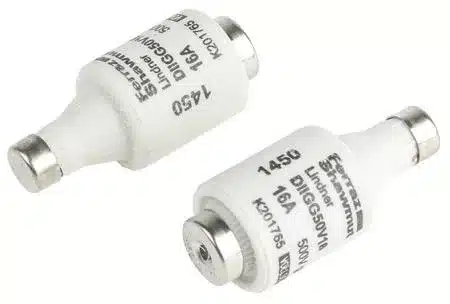
How to Identify a Blown Bottle Fuse? Exploring Common Issues with Bottle Fuses
Bottle fuses are reliable components that last for extended periods. However, they often blow out due to overloading or using an underrated fuse. Another issue is that they often overheat when used inappropriately or installed incorrectly. Identifying a blown bottle fuse is essential for maintaining the electrical systems’ safety and functionality, especially in applications involving electronics and hardware products. The following two common methods are employed to verify the status of a blown fuse: visual inspection and testing with specific tools.
Visual Inspection
In visual inspection, first, ensure that the power is off to avoid any electrical hazards. Then, remove the fuse from its holder and look at the glass part of the fuse. A healthy fuse will have a clear glass casing through which you can see the metal wire running from one end of the fuse to the other. If the fuse is blown, the glass often appears cloudy or smoked, or the metal wire inside may be visibly broken.
Testing with a Multimeter
When testing a fuse using a multimeter, turn your multimeter to the continuity setting, which often shows a diode symbol or simply the letters “CONT.”Touch one multimeter probe to one end of the fuse and the other probe to the opposite end. Make sure your touches are secure on the fuse’s metal caps.A good fuse indicates continuity, meaning the multimeter will beep or show a low resistance value (close to zero). If the multimeter shows no beep or reads ‘OL’ (Open Loop), the fuse has no continuity and is blown.
When To Replace the Bottle Fuse? What Should I Consider?
Once you have identified a blown fuse, it is crucial to replace it with a new one of the exact same type and rating to prevent damage or safety hazards. When replacing a fuse, match the specifications of the original fuse exactly, including the current and voltage ratings and size. Moreover, using a higher or lower-rated fuse can be dangerous and is not recommended.
Where are Bottle Fuses Used?
Bottle fuses find widespread application in various electrical systems, including:
Household Appliances: They are commonly used in appliances like air conditioners, refrigerators, and washing machines to protect against overcurrent conditions.
Industrial Equipment: Bottle fuses are essential for protecting industrial machinery, motors, and control panels.
Automotive Systems: They safeguard components like alternators, starters, and lighting circuits in automotive electrical systems.
Telecommunication Systems: Bottle fuses protect sensitive components in telecommunication equipment from overcurrent and short circuit faults.
Final Thoughts
Bottle fuses are reliable, cost-effective components essential for protecting electrical systems in various residential and industrial settings. Finally, by understanding the fundamentals and incorporating these fuses into electrical systems, engineers and technicians can enhance safety measures and ensure a more stable and secure power supply.








